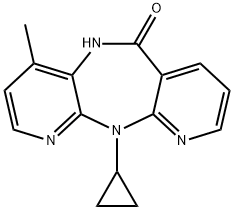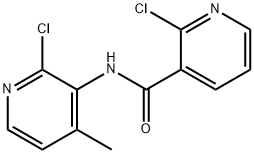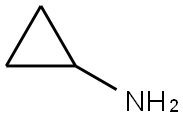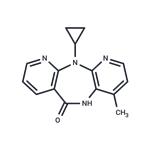
Nevirapine
- Product NameNevirapine
- CAS129618-40-2
- CBNumberCB9743074
- MFC15H14N4O
- MW266.3
- EINECS603-345-0
- MDL NumberMFCD00866928
- MOL File129618-40-2.mol
- MSDS FileSDS
Chemical Properties
| Melting point | 247°C |
| Boiling point | 409.5°C (rough estimate) |
| Density | 1.1300 (rough estimate) |
| refractive index | 1.6200 (estimate) |
| Flash point | 9℃ |
| storage temp. | 2-8°C |
| solubility | DMSO: ≥22mg/mL |
| form | powder |
| pka | 2.8(at 25℃) |
| color | white to tan |
| Water Solubility | 0.1g/L(temperature not stated) |
| Merck | 14,6490 |
| BCS Class | 2 |
| CAS DataBase Reference | 129618-40-2(CAS DataBase Reference) |
| EWG's Food Scores | 1 |
| FDA UNII | 99DK7FVK1H |
| NCI Drug Dictionary | nevirapine |
| ATC code | J05AG01 |
Safety
| Symbol(GHS) |
  
|
|||||||||
| Signal word | Danger | |||||||||
| Hazard statements | H225-H301+H311+H331-H370 | |||||||||
| Precautionary statements | P210-P260-P280-P301+P310-P311 | |||||||||
| Hazard Codes | Xi | |||||||||
| Risk Statements | 36/37/38 | |||||||||
| Safety Statements | 26-36-37/39 | |||||||||
| RIDADR | UN1230 - class 3 - PG 2 - Methanol, solution | |||||||||
| WGK Germany | 2 | |||||||||
| RTECS | JM5562500 | |||||||||
| HS Code | 29339900 | |||||||||
| Hazardous Substances Data | 129618-40-2(Hazardous Substances Data) | |||||||||
| NFPA 704: |
|




